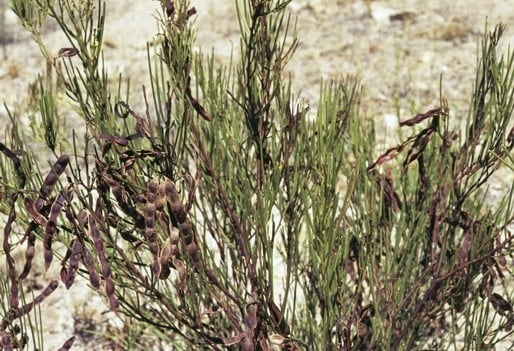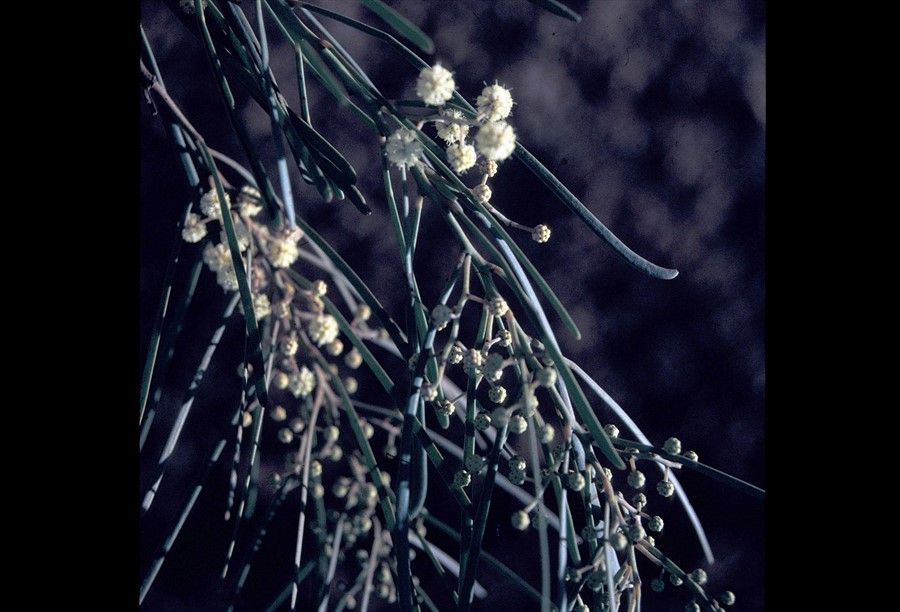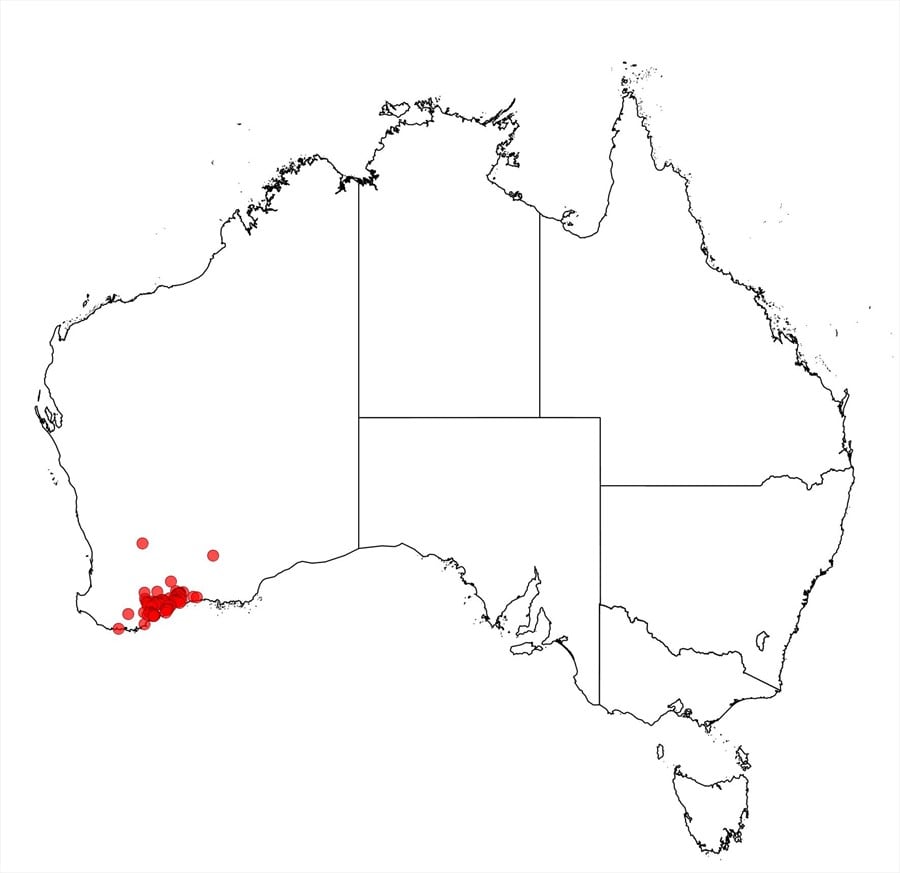Acacia harveyi Benth.
WATTLE
Acacias of Australia
Family
Fabaceae
Distribution
Occurs principally in the Fitzgerald R. Natl Park (SW of Ravensthorpe) but extending W to near Stirling Ra. (E of Cranbrook) and E to Munglinup (c. 75 km due ESE of Ravensthorpe), south-western W.A.
Description
Commonly an obconic, dense shrub 2–4 m high. Branchlets finely ribbed, glabrous. Phyllodes crowded, mostly ascending to erect, linear, straight to shallowly incurved, 5–12 (–16) cm long, 1–3.5 (–5) mm wide, uncinate, thin, glabrous; midrib ±prominent; lateral nerves absent or obscure; gland inconspicuous, usually 3–15 mm above pulvinus. Inflorescences 3–8-headed racemes; raceme axes commonly 10–25 mm long, ±appressed-puberulous with pale yellow or white hairs; peduncles 3–4 (-6) mm long; heads globular, 3.5–4.5 mm diam., densely 20–30-flowered, cream or lemon yellow; bracteoles white-fimbriolate. Flowers 5-merous; sepals united. Pods narrowly oblong, scarcely constricted between seeds, to c. 8 cm long, usually 5–6 mm wide, firmly chartaceous, glabrous. Seeds longitudinal, oblong-elliptic, 4–4.5 mm long, dull, black; funicle filiform, 1/2–3/4 encircling seed in a single fold, red-brown; aril thick.
Phenology
Flowers Mar.–May. and July.–Oct.
Habitat
Grows in rocky clay, sand or loam, often along watercourses, in eucalypt woodland and scrub.
Specimens
W.A.: Hamersley R., Fitzgerald R. Natl Park, M.I.H.Brooker 2749 (B, PERTH, W); 61 km S of Jerramungup towards Albany, B.R.Maslin 2594 (AD, G, PERTH); 0.8 km E of Mara bridge over Pallinup R., K.Newbey 3023 (BRI, K, MEL, NY, PERTH); c. 102 km from Esperance on Esperance–Ravensthorpe hwy at turnoff to Fuss Rd, A.Strid 22430 (PERTH).
Notes
The Preiss 941 specimen referred to in the protologue is A. cupularis.
A variant (not included in above description) appears to be intermediate between this species and A. aestivalis (e.g. K.Newbey 9730, PERTH). It forms dense populations in disturbed sites near Ravensthorpe and has pods 7–9 mm wide and glands normally 15–30 mm above the pulvinus.
A member of the ‘A. microbotrya group’, nearest the more northerly A. aestivalis which has often broader phyllodes with the gland farther from the pulvinus, golden flower-heads, golden-fimbriolate bracteoles and broader pods. Acacia harveyi is also related to A. chamaeleon and A. chrysella; it is sometimes confused with A. crassiuscula.
FOA Reference
Data derived from Flora of Australia Volumes 11A (2001), 11B (2001) and 12 (1998), products of ABRS, ©Commonwealth of Australia
Author
Minor edits by J.Rogers
B.R.Maslin
This identification key and fact sheets are available as a mobile application:
URL: https://apps.lucidcentral.org/wattle/
© Copyright 2018. All rights reserved.












